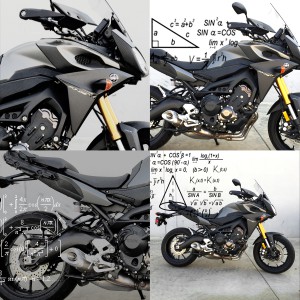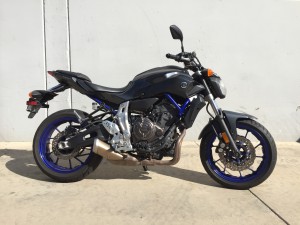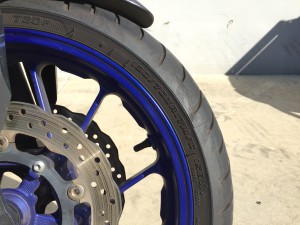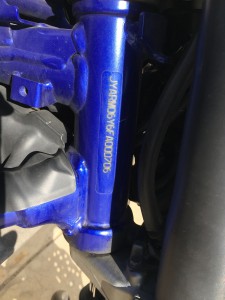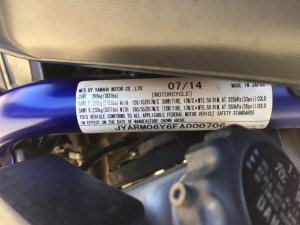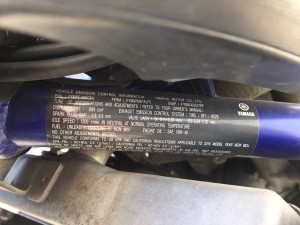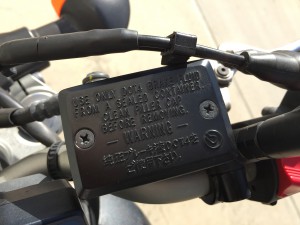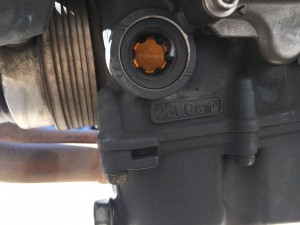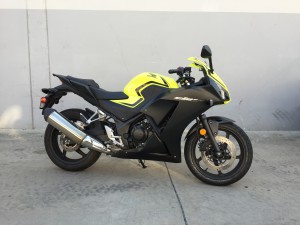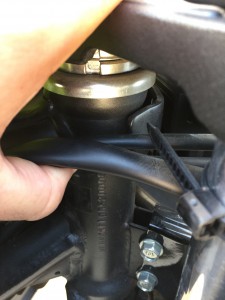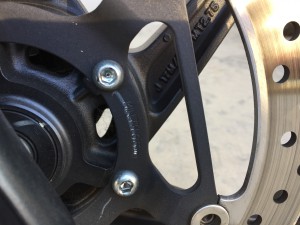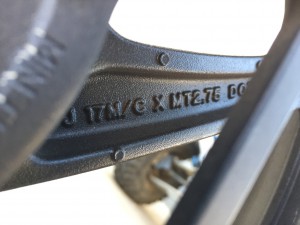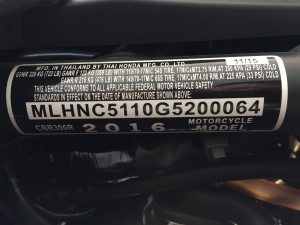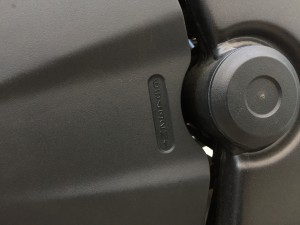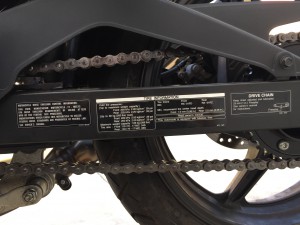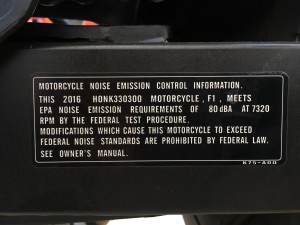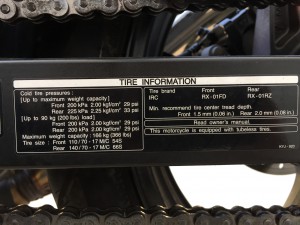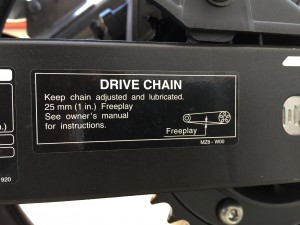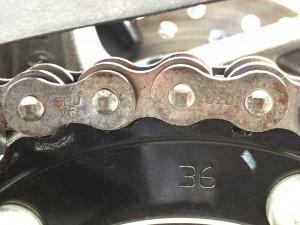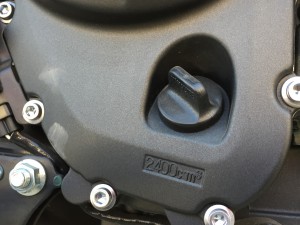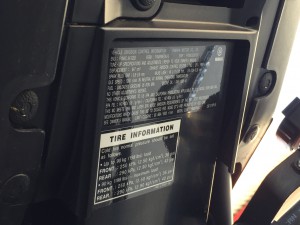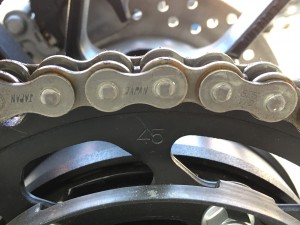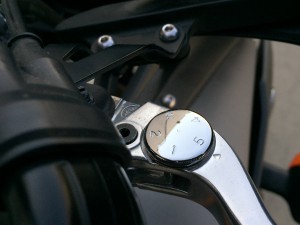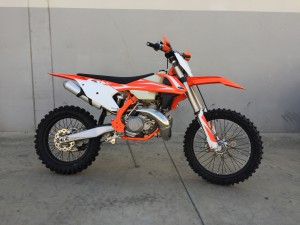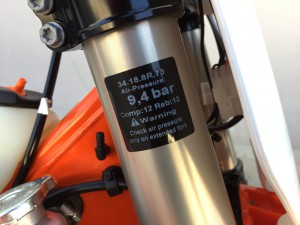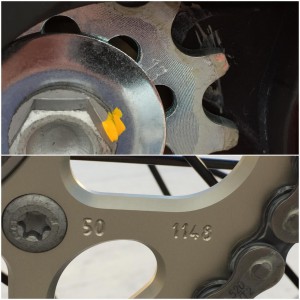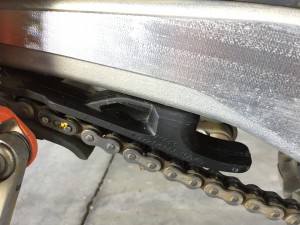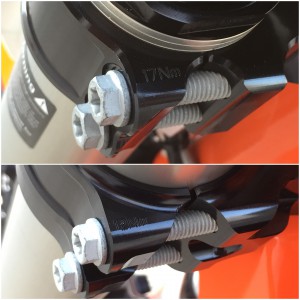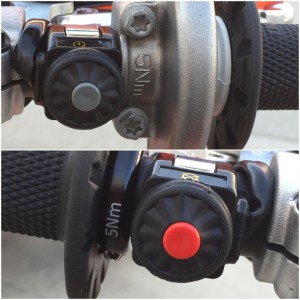Motorcycle VIN Numbers: What Do They Mean?
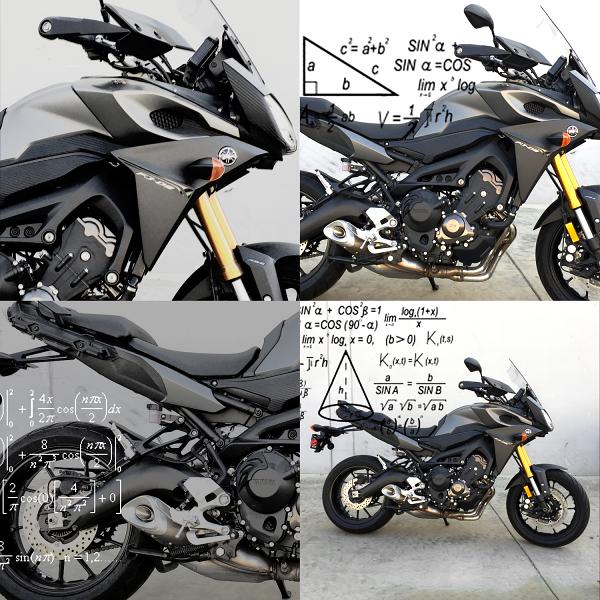
Deciphering The Digits: Making Sense Of The Numbers You Find On Your Motorcycle
Whether you picked up a used dirt bike on Craigslist or just rode away from the dealership on a brand new street bike, there is a lot of info about the bike you can discover just by searching the tires, frame, engine, and other components for numbers. There are numbers scattered all throughout a motorcycle; some are casting numbers or part of the manufacturing process while others can reveal details about that specific motorcycle. Certain numbers can be handy for figuring out which replacement parts you might need, and others are good for maintenance purposes or identifying things like the actual year of the bike-believe it or not, not all Craigslist ads are filled with factual information.
In this article we are going to cover over some of the places where you can find important numbers and help you sort out what those numbers mean.
The first bike we are going to look at is a used 2015 Yamaha FZ-07:
Let's start at the front tire. There's quite a few numbers you'll find on the sidewall of a motorcycle tire which we've covered in a previous article called Motorcycle Tire Knowledge Tune Up, but right now we are going to focus on the most prominent numbers which provide the tire size info. This bike is running a 120/70ZR 17. The first number is the tire width dimension as measured in millimeters. The second number represents the aspect ratio. The aspect ratio has to do with the sidewall height and is represented as a percentage in relation to the tire width. So in this case the sidewall height is equal to 70 percent of the width. The Last number is the inside diameter which is measured in inches, so this tire has a 17-inch diameter.
The VIN (Vehicle Identification Number) can usually be found on the right side of the neck tube, however depending on how many cables or wires that run through there it can sometimes be difficult to read. Like a fingerprint, the VIN is unique to each vehicle and there are no two VINs with the same numbers and letters-or at least there shouldn't be. Until the NHTSA created a 17 character VIN standard in 1981 VIN numbers ranged anywhere from 11 to 17 characters. To reduce confusion between the numbers 0 and 1 VINs don't use the letters I, i, O, o, Q, or q. This 17 character string of numbers and letters can reveal a lot of significant details about a motorcycle.
When purchasing a motorcycle or any vehicle for that matter, checking the VIN is the very first thing you want to do. By using either the DMV or any of the sites offering a vehicle history report, performing a VIN check can tell you if the motorcycle has been reported stolen, the title history (who has owned it), if it's a salvaged vehicle, any recalls/warranties, and any reported accidents it might have been in. So while the motorcycle might look good from the outside, on the inside it could have a lot of dirty little secrets.
Besides the information mentioned above, the VIN can also reveal
where the motorcycle was built, model year, model, engine size, and
much more. Not all of the numbers and letters can be easily
deciphered without running a VIN check, again go with the DMV or
you could even try Cyclopedia to help you decipher everything. The
VIN is broken down in to three parts. The first three characters
are the world manufacturer identifier (WMI), the next six are the
vehicle descriptor section, and the last eight are the vehicle
identifier section. It can be broken down even further as seen in
the image below.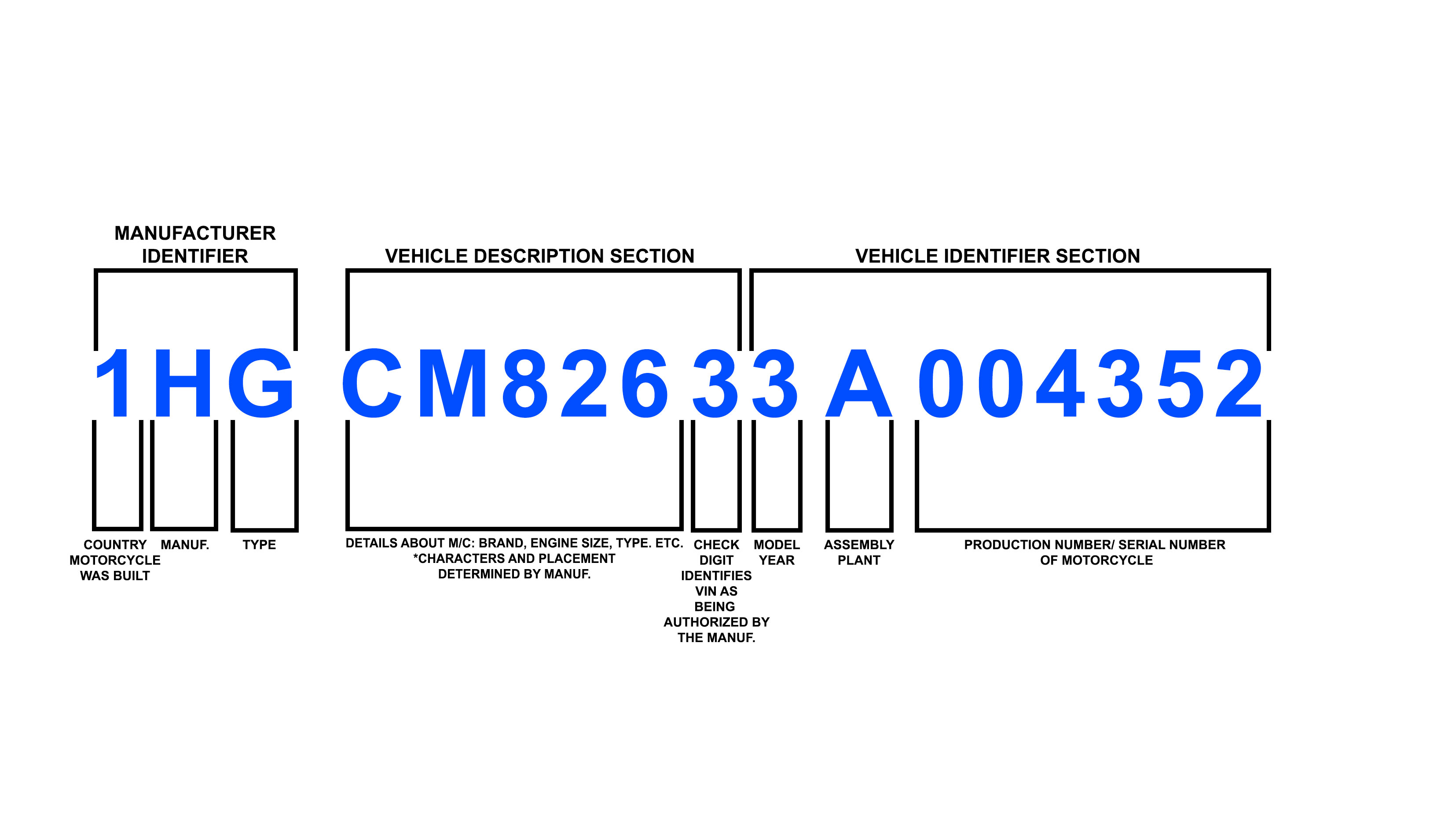
When purchasing from a private seller and you want to confirm the exact year of the motorcycle you can go directly to the 10th character, however, figuring out what that character represents isn't immediately known unless you're familiar with the model year encoding format.Skip Table
| Code | Year |
|---|---|
| A | 1980 |
| B | 1981 |
| C | 1982 |
| D | 1983 |
| E | 1984 |
| F | 1985 |
| G | 1986 |
| H | 1987 |
| J | 1988 |
| K | 1989 |
| Code | Year |
|---|---|
| L | 1990 |
| M | 1991 |
| N | 1992 |
| P | 1993 |
| R | 1994 |
| S | 1995 |
| T | 1996 |
| V | 1997 |
| W | 1998 |
| X | 1999 |
| Code | Year |
|---|---|
| Y | 2000 |
| 1 | 2001 |
| 2 | 2002 |
| 3 | 2003 |
| 4 | 2004 |
| 5 | 2005 |
| 6 | 2006 |
| 7 | 2007 |
| 8 | 2008 |
| 9 | 2009 |
| Code | Year |
|---|---|
| A | 2010 |
| B | 2011 |
| C | 2012 |
| D | 2013 |
| E | 2014 |
| F | 2015 |
| G | 2016 |
| H | 2017 |
| J | 2018 |
| K | 2019 |
| Code | Year |
|---|---|
| L | 2020 |
| M | 2021 |
| N | 2022 |
| P | 2023 |
| R | 2024 |
| S | 2025 |
| T | 2026 |
| V | 2027 |
| W | 2028 |
| X | 2029 |
| Code | Year |
|---|---|
| Y | 2030 |
| 1 | 2031 |
| 2 | 2032 |
| 3 | 2033 |
| 4 | 2034 |
| 5 | 2035 |
| 6 | 2036 |
| 7 | 2037 |
| 8 | 2038 |
| 9 | 2039 |
Below the neck and along the upper right side frame tube on this FZ-07 is a Federal Motor Vehicle Standards sticker with some of the vehicle specs such as when the motorcycle was actually manufactured/assembled (different than the model year), gross vehicle weight details, tire and wheel sizes, and the VIN again. This could be useful if you purchased a used motorcycle and for some reason the previous owner changed wheel sizes and you want to put the bike back to stock.
On the other side of the bike is the Vehicle Emissions Control Sticker. All vehicles must be tested by the manufacturer and pass emissions before they can be sold in the United States. The emission control sticker provides info detailing specifics about the vehicle when it was tested and approved to meet emissions. California has its own emissions standards put in place by the California Air Resources Board (CARB). CARB's standards are much stricter than the EPA's and therefore you might see an emission sticker that says "conforms to US EPA and CARB regulations" on it. That means the vehicle was tested and permitted to be sold in the state of California. It's not too often, but you may hear of motorcycles or cars/trucks called 49-state vehicles; this means the manufacturer didn't want to go through the extra steps and expenses to have the vehicle tested/approved by CARB so the vehicle is only allowed to be sold by dealers in all 49 states except California.
Moving up to the handlebars on the FZ you'll notice that there is some writing on top of the master cylinder cap. All master cylinder caps will tell you which type of brake fluid, which in this instance and for most motorcycles, is DOT 4. The rear master cylinder on this motorcycle can be found on the right side down behind the passenger peg mount.
There are various types of brake fluid: DOT 3, DOT 4, DOT 5, and DOT 5.1 and each have different wet and dry boiling points. Also DOT 5 is silicone-based as opposed to glycol-based like the other three, so when bleeding your brakes or refilling the master cylinder it's best to adhere to the manufacturers recommendation on the cap because they have determined which brake fluid is best for the weight and braking system of your motorcycle. One more thing about braking fluid, DOT 3, 4, and 5.1 can mess up the finish of your motorcycle if spilled on the paint. So take extra caution when filing the master cylinder and use clean rags or towels to cover the painted surfaces near the master cylinder.
The last number we are going to take a look at on the FZ-07 is found at the bottom of the engine case on the front left side. Just below the oil level sight glass is the number 2300cm3. This number is equal to 2.3 fluid liters/2.4 fluid quarts which is the amount of oil to use when an oil change is performed without installing a new filter, as stated in the owner's manual.
Next we are going to take a look at a used 2016 Honda CBR 300R
First off as you can see in the picture below there are a lot of cables and lined running along the neck, making it a little difficult to see all the characters. Making it even more difficult, the characters are running from the bottom of the neck to the top. And making it extremely difficult is the fact that the numbers weren't covered before the frame was powdercoated or cleaned up afterwards.
If you look close at the front brake rotor you'll notice it's marked with "MIN. TH. 3.5mm" this is the minimum thickness the rotor should be run at. If you just picked up a used bike from a private seller and you suspect they may have used the bike for track days or were hard on the brakes then throw a digital caliper on the rotor and make sure it's within spec. If it's below the indicated thickness it's time to replace.
As you peer through the rotor and look into the cast spokes you'll see wheel size is listed. The front wheel is a 17 x 2.75. Good to know if you're searching for new wheels.
On the left side of the bike you'll find the Federal Motor Vehicle Standards sticker. The VIN is much easier to read in this location.
Moving down by the shift lever you'll notice there are some numbers on the plastic cover over the countershaft sprocket. Those numbers identify the number of gears on this motorcycle and the shift pattern, which is the standard shift pattern of 1st being all the way down, neutral half a click up, then one click up for 2nd through 6th gears. The shift pattern might be obvious for most motorcycle riders, but could be useful for a new rider. More than likely it's just some kind of safety regulation.
On the swingarm there are a couple stickers with some information on them.
First of all there's an Emissions sticker indicating that this bike passed the noise emission requirement of 80dba at 7,320 RPM. Exhaust noise has become a big hot button and there have been regulations put in place to keep noise down. This sticker indicates that the stock exhaust passed the test so keep in mind if you tamper or modify your motorcycle exhaust to change the sound or make it louder you could be opening up your chances of getting noticed and possibly ticketed by law enforcement.
The next sticker provides tire information such as cold tire pressure/maximum weight capacity for front and rear, tire sizes, tire brand/model, and the minimum tread depth for front and rear.
The last sticker tells you how much free play to keep in the motorcycle chain. Good to know when cleaning your chain.
Looking at the rear sprocket you'll notice the number 36 stamped into it. This number represents the amount of teeth on the sprocket. Behind that plastic cover where the shift pattern is located you'll probably find the number 14 stamped on the countershaft/front sprocket. Knowing the amount of teeth on the sprockets comes in handy when it's time to replace the sprockets or if you want to change your dive ratio for better acceleration or faster top speed. If you're interested in learning about how changing your motorcycle's drive ratio can affect the performance check out our article Adjusting Your Drive Ratio. In this photo you can also see that this bike is running a 520 motorcycle chain.
On the left side of the cylinder you can see 286cm3 stamped on to it. That's the actual engine displacement for this motorcycle, 286cc-not exactly the 300 the name implies.
Next let's see what we can find on a 2015 Yamaha FJ-09.
Below the oil fill cap you see the number 2400cm3. Just like on the FZ above, this is the amount of oil to use for an oil change when you don't install a new oil filter; 2.54 quarts/2.4 liters.
The emissions sticker and tire info sticker for this motorcycle is located on the underside of the tail section.
The FJ-09 runs a 45 tooth rear sprocket and a 525 chain.
When looking at the hand controls on this motorcycle, more specifically the brake lever you'll see that there are the numbers 1-5 marked on a dial. The lever is adjustable and by rotating the dial you change the distance between the lever and the grip. Many people like to ride with the levers just at the tips of their fingers as it gives them more control and they can finesse the lever as needed without being heavy-handed. The number 1 spot is the furthest and then as you turn the dial the levers gets closer with each click until it gets to its closest point at number 5. So if you have long fingers or big hands you would probably want the dial set at the number 1 position.
The last bike we are going to take a look at is a 2018 KTM 300 XC.
KTM is a little unique in the fact that they make things pretty convenient and easy for owners when it comes to replacing parts or performing some maintenance tasks as you'll see below.
First let's take a look at the sticker found on the right fork tube. While it might look like a bunch of gibberish, what this is telling you is the stock settings on the WP AER Fork. According to the owner's manual these settings are based on an average rider that weighs between 167-185 pounds. The 9.4 bars is a metric measurement and represents the air pressure in the forks. If we convert this to psi we get 136psi. Then below that you see Comp: 12 Reb: 12. This is telling you that the bike has been set up with the compression and rebound set at 12 clicks out from zero. The top of the fork has a dial that you can turn to adjust the compression and at the bottom is an adjuster for the rebound. You zero the dials out by turning them clockwise until they stop and then adjust counterclockwise from there. The manual offers suggestions for settings. If you start from the stock settings you can increase damping by turning the dial clockwise and decrease by turning it counter clockwise.
You see here that the counter shaft sprocket on the KTM is a 13 tooth and the rear is a 50 tooth. The bike runs a 520 VT2 chain.
One of the things that helps KTM stand apart is that most of the components on its motorcycles are marked with the OEM part numbers, such as the chain slider on the XC. With the part number easy to find and read it makes ordering replacement parts a breeze. Some other manufacturers might do this here and there but not to the extent of KTM.
The other thing that sets KTM apart is that they put the torque specs on certain components. As you can see here the upper and lower triple clamps are marked with 17 Nm and 12 Nm respectively. Convert those to ft. lbs. and you get 12.5 ft. lbs and 8.9 lbs.
The throttle housing clamp and clutch side grip also have the torque specs on them. With these numbers plainly visible on the components you don't have to go digging into your owner's manual or search the web to find out what the proper torque specs are.
We covered a lot of info in this article, some of it may you may have already known, but hopefully you learned something new. The important thing to take away from this is there's a lot you can learn from your motorcycle if you just take the time to get up close and peek around. You just might save yourself some time and headaches down the road.

